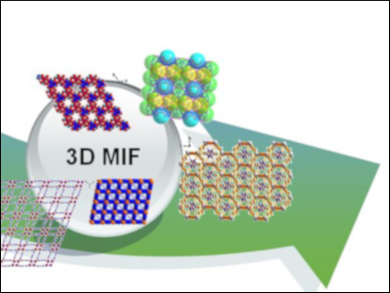Pentazole (HN5) and its anion pentazolate (cyclo-N5–) have intriguing structures and potential applications in ultrahigh-performing explosives, propellants, or pyrotechnics.
Yuangang Xu, Qiuhan Lin, Pengcheng Wang, and Ming Lu, Nanjing University of Science and Technology, China, have synthesized a series of 3D metal-inorganic frameworks (MIFs) based on pentazolate using self-assembly. They combined metal cations with pentazolate, azide (N3–), or nitrate (NO3–) anions in water at room temperature. The products, [Cu(N5)(N3)]n, [Ag(N5)]n, [Ba(N5)(NO3)(H2O)3]n, and [NaBa3(N5)6(NO3)(H2O)3]n, were characterized using single-crystal X-ray diffraction, scanning electron microscopy (SEM), infrared (IR) and Raman spectroscopy, elemental analysis, and thermal analysis.
The team found that cyclo-N5– could be stabilized in anhydrous metal–N5– frameworks. The multi-ligand frameworks have decomposition temperatures of 98.2–173.4 °C. [Ag(N5)]n has enhanced detonation performances compared to previous cyclo-N5–-based frameworks. The syntheses could provide inspiration for the development of metal–pentazolate frameworks and polynitrogen chemistry.
- Syntheses, Crystal Structures and Properties of a Series of 3D Metal-Inorganic Frameworks Containing Pentazolate Anion,
Yuangang Xu, Qiuhan Lin, Pengcheng Wang, Ming Lu,
Chem. Asian J. 2018.
https://doi.org/10.1002/asia.201800476



